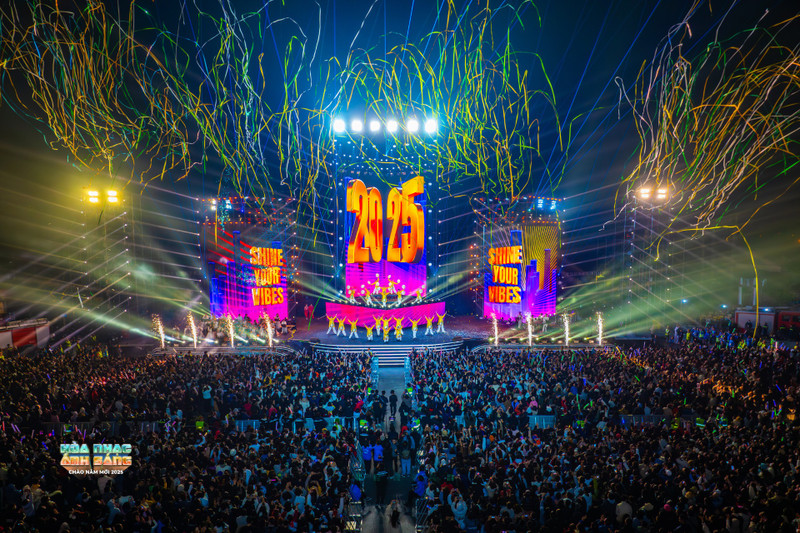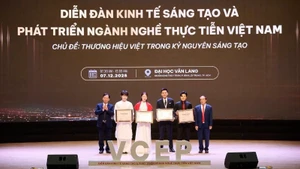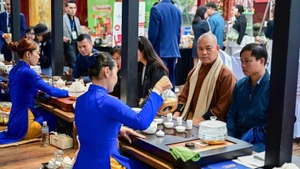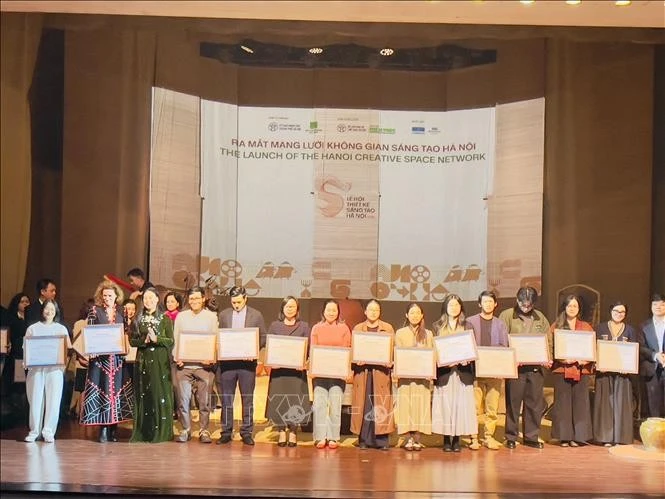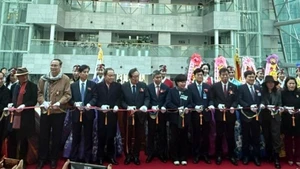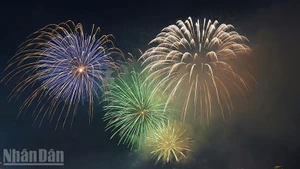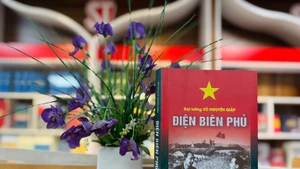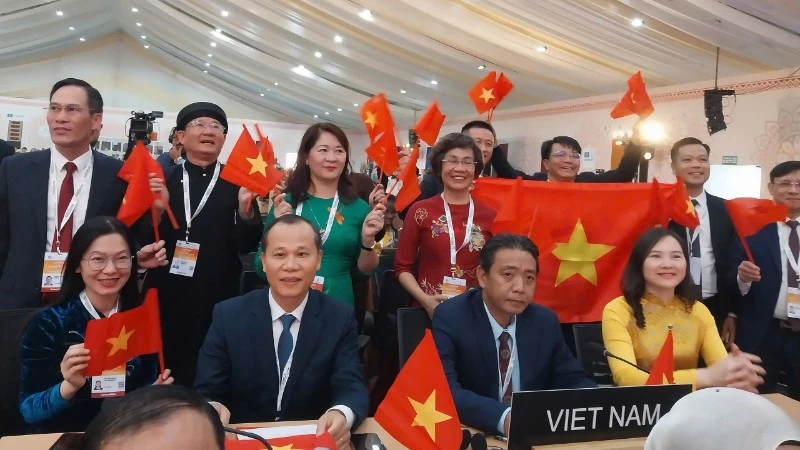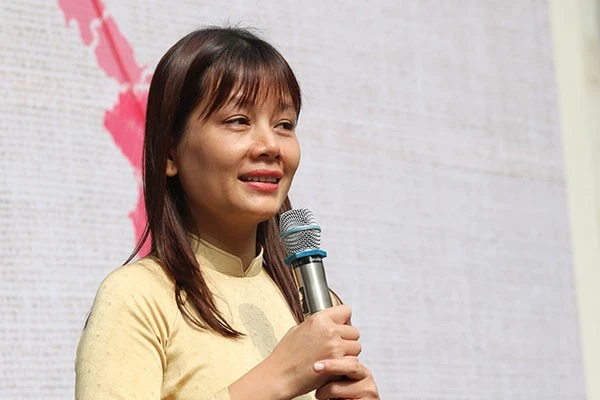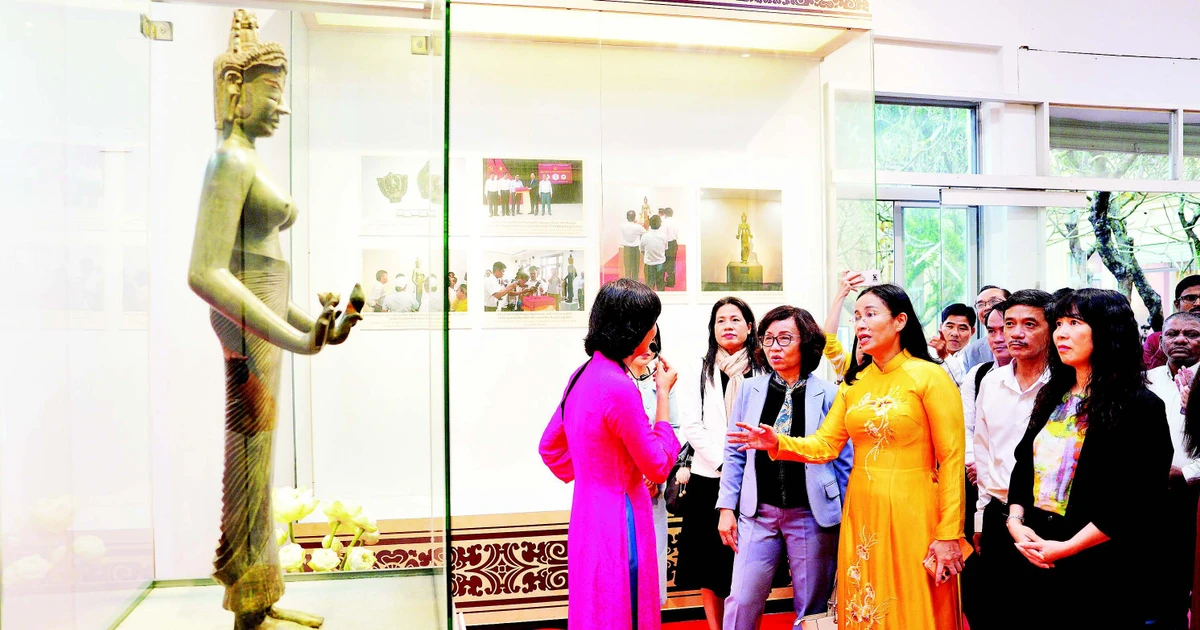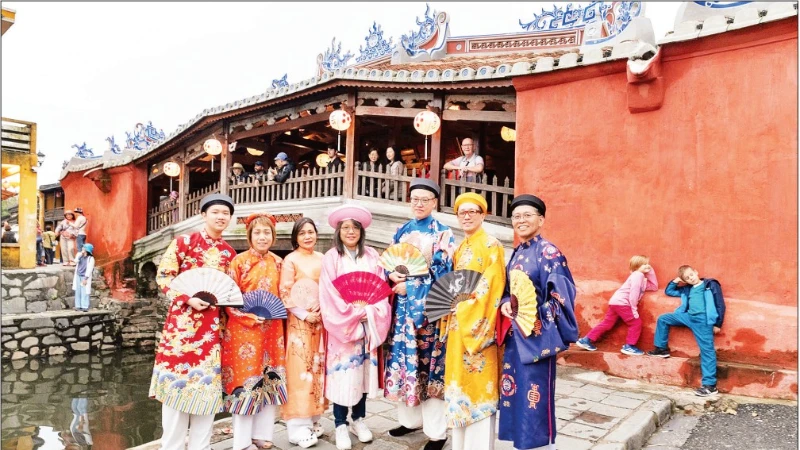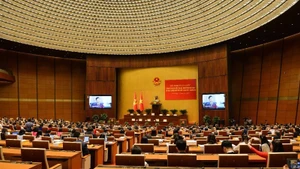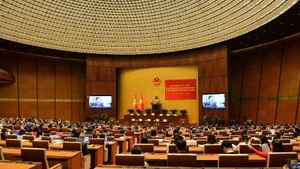A strong foundation for developing the cultural industry
According to Resolution No. 09-NQ/TU of the Hanoi Party Committee, the cultural industry is identified as a key driver of the Capital's economic development. It is no coincidence that Hanoi was recognised as a UNESCO Creative City in 2019.
With a vast heritage of 5,922 relics, 1,793 traditional festivals, and 1,350 craft villages, Hanoi has all the resources needed to transform culture into an economic asset, promoting tourism, artistic creativity, and the night-time economy.
The challenge lies in how cultural values can not only be preserved but also brought to life, retold in the language of the times. The answer lies in creative cultural events – where technology and art together shape a new image for heritage.
Light Symphony: A prime example of creativity and heritage connection
Among the series of events aimed at developing the cultural industry, the 2025 Light Symphony in Tay Ho District has become a remarkable model of the fusion between technology and heritage.
With over 80,000 attendees and 120,000 online viewers, the programne not only delivered a mesmerising night of art but also showcased the potential of integrating technology into cultural performances. The 2025 drones were not merely flying devices but painting brushes in the sky, depicting images of West Lake Dragon, and other symbols of Hanoi through light.
This event was not just a visual feast but also carried a new mindset for cultural development, demonstrating how an art program could become a tourism promotion tool, attracting international visitors to the Capital. This is the direction Hanoi needs to explore more extensively in the future.
Hanoi's cultural industry: Potential and Future directions
From the Light Symphony model, the connection between culture, tourism, and technology emerges as the key to sustainable development.
In the future, Hanoi can further explore initiatives by utilising advanced technologies at historical sites to vividly tell Hanoi's stories, developing night-time art events that combine music and light performances to attract tourists and boost the night-time economy, and creating multidisciplinary art festivals (music, fashion, film, and theatre) to establish Hanoi as a true creative hub.
Turning culture into an economic resource does not mean commercialisation but rather preserving and spreading traditional values in a modern breath. If Hanoi continues to implement sound policies and strengthens the connection between the government, businesses, and the art community, the cultural industry will not only be a trend but also a solid economic pillar for the Capital's future.
The event is supported by media and advertising partners, including Saigon - Hanoi Commercial Joint Stock Bank (SHB), T&T Group Joint Stock Company, Suntravel - Transport Union Tourism and Trade Joint Stock Company, Hanoi Beer - Alcohol - Beverage Corporation (HABECO), Vietnam National Petroleum Group (Petrolimex), Eurowindow Holding Joint Stock Company, Ha Anh Aviation Tourism Joint Stock Company, MobiFone Telecommunications Corporation, and Tachudu Tourism and Event Co., Ltd.
